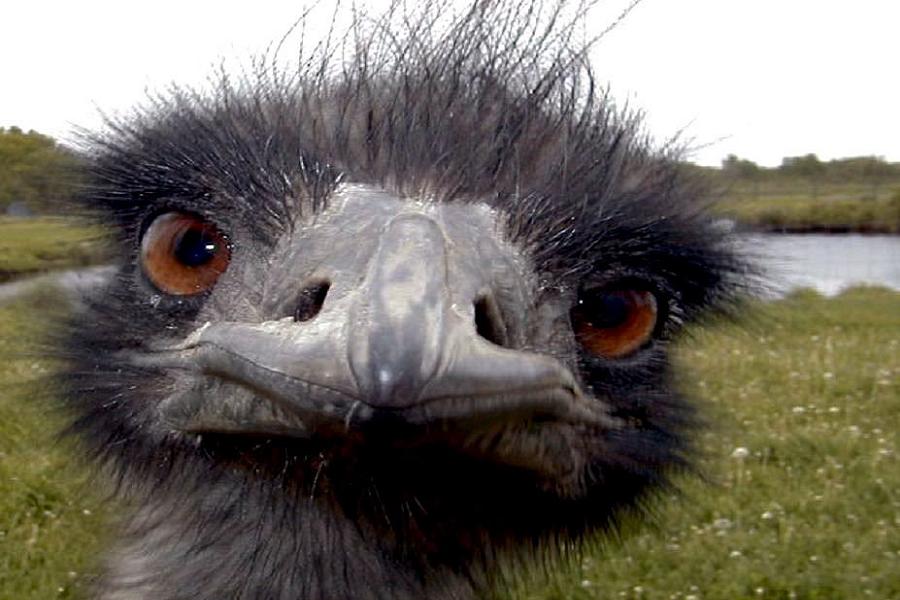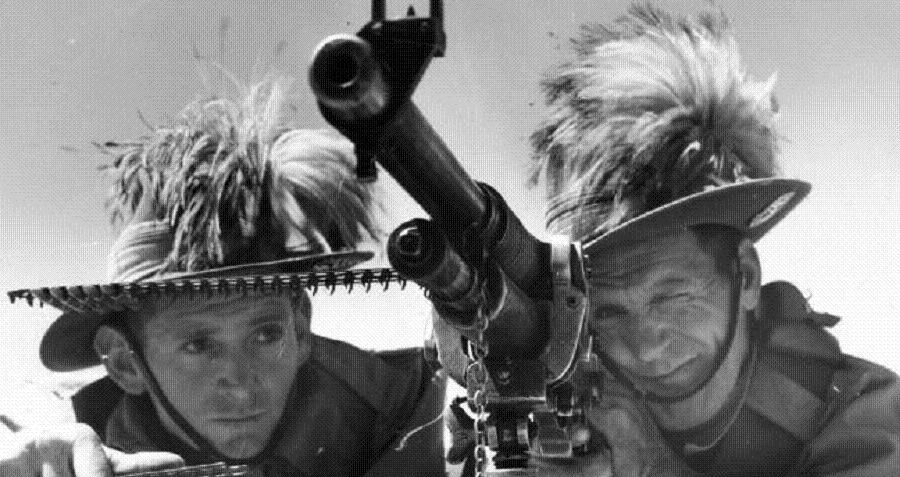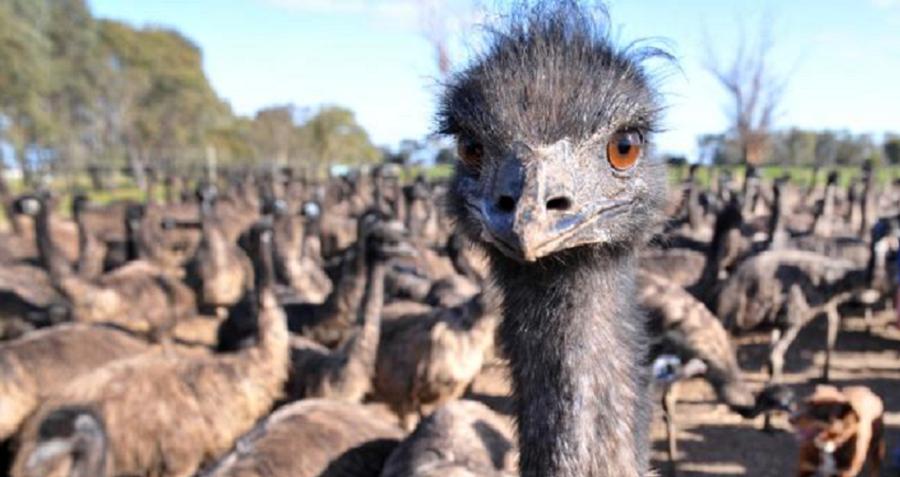In 1932, Australia went to war against an enemy like none it had ever faced before: the emu.
If there’s one thing that human beings are good at, it’s killing other species. This is nowhere more true than in Australia, where humans have managed to accidentally drive hundreds of native species either extinct or onto the endangered species list.
Which is precisely what makes a failure in that department — specifically the Great Emu War of 1932 — is all the more interesting.

Flickr/David Cook
The First Tremors
The trouble began for Australia shortly after World War I. Australia had sacrificed terribly in that war, sending tens of thousands of its young men to die in the doomed Gallipoli Campaign.
The survivors who staggered back had trouble adjusting to civilian life. At the same time, the vast interior of the continent remained — it was felt — shamefully underdeveloped. Letting one problem solve another, the Australian government issued land grants in a kind of Down Under Homestead Act, giving each veteran as much land as he could farm on the edges of Australia’s harsh, unforgiving Outback.
Just as in the United States, which was doing almost exactly the same thing in Kansas and Oklahoma at the time, this almost immediately led to overfarming, over- or under-irrigation, and generally unsustainable land practices.
This comes in part because Australia’s interior has a very dry and unpredictable climate where droughts are common. When the interior gets exceptionally dry, native animals tend to migrate toward the edges looking for food and water.
Those are the two things that farms have in abundance, and so the first few waves of stray emus started drifting in the late 1920s. Until 1932, they had always come in small groups and were generally easy to scare away from the fields.
The Face Of The Enemy

YouTube/CanWeTalk
The emus were easy to scare in the beginning because they’re large, relatively gentle herbivores. Up close, they have huge, powerful feet and claws that can disembowel a Komodo dragon, but left alone, they tend to flock at a distance from potential threats.
One thing they can do, however, is eat huge amounts of plant matter in a day. Even a single emu can strip a garden in a few hours, and a big enough flock of them passes over a wheat field like a huge, pinfeathered scythe.
Emus are essentially dinosaurs with beaks and feathers. Aside from the beaks, they’re hardly different from herbivorous theropods such as gallimimus and avimimus.
They don’t even have wings; their ancestors never flew, and emus have inherited a vestigial set of arms with bones and claws, but no muscle or tendons to control them. They just dangle off of the animals’ chests like earrings under their feathers.
What they lack in arms, the emus more than make up for in legs. Running at full tilt, an emu might get up to 30 mph on the open plains, and in a kick fight, it could give a kangaroo a run for its money. They also tend to peck when they get angry, which is whenever a human bothers them.
In the summer of 1932, a flock of 20,000 six-foot-tall, hungry dinosaurs emerged from the Outback looking for food. Worse, in order to get to the veterans’ farms, the emus walked right through the fence that had been laid out to keep the rabbits away from the cultivated land.
Something had to give.
Appeal To Higher Authority

Public DomainA Model T, suitably modified, was found to make a uniquely ineffective platform for mobile machine guns.
The veterans’ first response was predictable. When the advance elements of the emu force showed up, they assumed it was another typical raid and tried to drive them off with individual rifle shots. Sometimes this worked, but as more emus arrived from the wilderness, they got more desperate and less easy to scare.
Just shooting at them wasn’t especially helpful; unless the shooter got the emu right in the head, it was as likely as not to walk it off and go back to eating the crops.
Like the dinosaurs that they are, emus bleed slowly. Like herbivores, they have large gut tracts that occupy most of their body cavity, making a one-shot kill to a vital organ unlikely. Like birds, they have a large coat of feathers that disguises their real body dimensions and makes it likely the shooter will aim too high or too low to inflict an effective wound. Plus, there were thousands of these things all over the place.
In desperation, the farmers held meetings to discuss their problems. The emus were part of Australia’s native wildlife, and thus under the purview of the Ministry of the Interior, but past experience with that department had left the veteran farmers wary of calling on it for anything.
In fact, it was arguably the ministry’s fault that the emus were attacking; in 1929, the government had encouraged wheat production with promises of subsidies that never materialized, and the farmers were still angry over being cheated.
Instead, they asked for help from the Ministry of Defence, which was surprisingly receptive to their needs. Soon, an elite fighting force of bush commandos was being assembled under the command of Major G.P.W. Meredith of the Seventh Heavy Battery of the Royal Australian Artillery. Their mission was to kill or drive out all emus within range of the farmsteads, regardless of the cost in lives or materiel.
Australia’s Fighting Force For The Great Emu War

Imgur/BRAVO9ACTUAL
Meredith knew how to organize an operation. With the provincial government of Western Australia footing the bill for transport, and the farmers themselves paying for food, lodging, and ammunition, the artillery major acquired two Lewis guns and the crews to serve them.
They loaded onto trucks in October 1932 and headed to the war zone of the Great Emu War. A spate of torrential rain slowed down the operation at first, but by early November the team was ready for the Great Emu War.
Or, rather, they thought they were ready. In fact, they had only brought 10,000 rounds of machine gun ammunition, when the threat was roughly twice that number of birds. It didn’t help matters that Lewis guns can be finicky to operate, especially in the muddy bush country.
Though Meredith had his work cut out for him, his team was confident enough about their prospects that they even hired a cinematographer from Fox Movietone to cover the hunt.
The first action of the Great Emu War came on November 2, near Campion. Advance scouts spotted a small flock of around 50 emus sheltering in the cover of trees at some distance from the main road.
As any sniper knows, the cover makes getting a clean shot difficult to impossible, and so Meredith ordered his men to drive the emus into an ambush. Instead of doing what any other animal would do and decently run toward the machine gun nests, the emus scattered and ran in chaotic patterns all over the area, occasionally pausing to eat or rest in the shade.
The whole time, every single bird kept out of the range of the machine guns. None of them even accidentally wandered close enough to be shot. After hours of effort, one of the Lewis gunners did manage to lug his weapon close enough for a volley, but it had no obvious effect.
Later, in the after-action report, Major Meredith wrote that “a number” of emus were killed, but he wasn’t clear how many. After a while, the birds wandered away from the kill zone.
“No Casualties”

Twitter/Weird History
The next action of the Great Emu War took place two days later on November 4. Scouts reported nearly 1,000 emus gathered to drink near a local dam, which was just the kind of concentration that Lewis guns were made for. These guns had been invaluable in the trench warfare of World War I, and probably tens of thousands of German soldiers had met their end by unwisely charging a Lewis nest.
Meredith ordered his gunners out into the trucks for an impromptu ambush. This time for sure, they would wipe out the whole flock.
The men arrived stealthily and found that the reports were, if anything, understated. A huge flock was waiting for them. Carefully they set up their gun (they only brought one gun, keeping the other in reserve behind the lines) and sighted their first targets.
The Lewis gun started chattering… and then immediately stopped. It had jammed after just a dozen rounds.
While the gun crew hurriedly field stripped the machine gun to clear the jam, the alarmed birds started their trademark running-in-all-directions defense, and by the time the gun was ready to shoot again there were no targets in range.
Major Meredith’s after-action report stated that after the first week of fighting, hundreds of birds had been killed, though at least one source claims it may have been fewer than 50. Meredith also thought to report that his unit had suffered “no casualties.”
A Determined Foe

Armada
By the time he sent that report, Meredith had been driven to the edge by his continued inability to get a decent kill tally. Part of the problem was that the birds were so fast that, no matter how many were gathered in one spot, after the first few shots they’d all scatter faster than any man could run.
At one point, Meredith ordered a Lewis gun to be mounted on the back of a truck to try to keep up with the running birds. It still didn’t work — it turns out that a truck that can do 65 mph on a paved road struggles to make 20 mph over rough land, and you can’t stabilize a machine gun on a static mount or shoot with any accuracy.
Worse, a single truck can only chase one emu at a time, and the hundreds of others will invariably run away from the vehicle, making a clean getaway almost every time.
On November 8, the Australian Parliament paused operations and withdrew the force. One month later, under renewed pressure from the regional government, they recommitted the men to the Great Emu War.
Major Meredith led his second offensive against the emus on November 12. Initial results were no better than they had been before, but by the end of the month Meredith’s men were claiming up to 100 emus a week. On December 10, Meredith was recalled and his team withdrew from the field.
In his final report, Major Meredith claimed that his teams had expended 9,860 rounds of ammunition and killed 986 emus; a ratio of exactly ten rounds per dead bird. This is consistent with the experience of a farmer who hit an emu with his truck that December. On examination of the dead bird, he found nine bullets in its body, which must have been there for at least two weeks before the bird was killed by the truck.
The Great Emu War: Peace And Reconciliation
Australia seems to have learned its lesson from the Great Emu War. When the farmers again called for military aid in 1934, they were turned down, as they were again in 1943 and 1948.
Instead of brute-forcing the culling of emus, the government set aside money for bounties and let the farmers themselves do the hard work of tracking and shooting the emu menace. This was much more effective. In 1934 alone, nearly 58,000 bounties were claimed.
When word of the Great Emu War reached London, environmentalists were aghast, as they often are, by what they saw as the totally unjustifiable killing of “rare” emus. The fact that there were tens of thousands of them, and that not a single one ever ate the livelihood of a London environmentalist, went unmentioned in the many articles written condemning the “barbaric” attacks on the gentle emu.
Meredith and his men never entirely lived down their role in the Great Emu War. At one point, an Australian MP jokingly suggested that the government commission a medal for the campaign, only for the suggestion to be made that the medals should all go to the emus.
In time, the laughter faded and everything went back to normal. Another emu cull was carried out in 1994, but this time it was done by volunteers who put the animals out of their misery while they were dying of thirst in a drought, thus saving precious water for, among other things, the hundreds of thousands of other emus still living in the interior. The peace has been won at last.
For more on Australia’s checkered history with native and invasive species after this look at the Great Emu War, check out how rabbits, feral cats, and koalas have fared in the land down under.





